Still learning to fly? California knows how to make a nest for you, then kick you out. Chances are you’ll then find yourself surrounded by a flock of like-minded folks who already know how to spread their wings. That’s why they came there to begin with.
Diego Miralles, M.D., head of Janssen Healthcare Innovation’s unique lab complex in San Diego, says California’s positives are its environment, people and spirit of entrepreneurship.
“As an entrepreneurial environment, in terms of talent, attitude and lack of hierarchies, this environment is second to none in the world,” he says.
At the same time, “for a startup biotech company, the regulations can be cumbersome at times, as a lot of startups don’t have a lot of resources. That’s an area for improvement.” His company’s lab, an imaginative reuse of a Johnson & Johnson facility for exactly this breed of startup, is improving things in the meantime. But Miralles thinks the state could also be more proactive in recruiting companies.
“We know what Texas and other states are doing,” he says, citing Texas Gov. Rick Perry’s most recent recruiting visit to California. Miralles says he’d like to see state officials “putting themselves in a service position — ‘How do I help this company come to my state?’ It would be refreshing, and make people feel we want them in California.”

The Lorry I. Lokey Stem Cell Research Building at Stanford (left) provides space for 550 stem cell researchers and staff. It received $50 million from California’s stem cell agency, which also helped fund the Eli and Edythe Broad Center of Regeneration Medicine and Stem Cell Research at UCSF (right).
Similar ambivalence is evident from Donn Tice, chairman and CEO of d.light design, which in January won the prestigious Zayed Future Energy Prize, the world’s largest annual award in the renewable energy and sustainability sector. Based in San Francisco, the firm designs, manufactures and distributes solar light and power products throughout the developing world. A for-profit social enterprise whose purpose is “to create new freedoms for customers without access to reliable power so they can enjoy a brighter future,” the firm directly employs 200 people, and indirectly employs hundreds more worldwide.
Tice says d.light “is located in San Francisco because it grew from a Stanford Business School start-up. This area is a hotbed of social enterprises and technology innovation which makes it very attractive, along with the quality of talent that is here. However, the high cost and high tax environment are not attractive and were the advantages not here, we would be located somewhere else.”
Mary Walshok, Ph.D., is associate vice chancellor for public programs and dean of extension at University of California San Diego. A sociologist, she’s also widely known as the co-founder in the 1980s of San Diego’s trend-setting networking organization CONNECT, and has been studying how industrial legacies and clusters shape social dynamics and cultural values for 30 years.
“We know, living in California, that what is as important as science, patents, technology transfer and commercialization is the business culture that knows how to take a promising product and run with it,” she says. “Make it happen. We call that an entrepreneurial culture. The nimbleness you see in Silicon Valley, in L.A. in the entertainment industry, and in San Diego in the life sciences space — these guys can turn on a dime. If there’s a new opportunity in Asia or Brazil, they’re chasing that. If it requires law firms to restructure [an arrangement] or accountants to develop new models, they do it. It may start with one technology application and then six months later change direction. It’s about management, not capital or technology.”
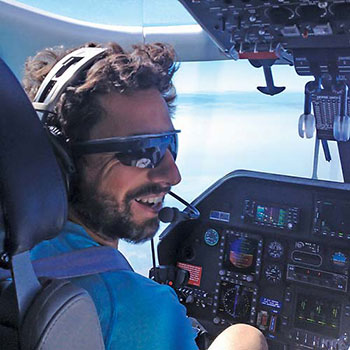
Sergey Brin (pictured above), co-founder of Google, in February joined wife Anne Wojcicki (right), Facebook CEO Mark Zuckerberg, Zuckerberg’s wife and Russian investor Yuri Milner in co-founding the San Francisco-based Breakthrough Prize in Life Sciences Foundation, which will award five prizes annually of $3 million each to deserving scientists and researchers.
Photo courtesy of Google
No wonder San Francisco was the place that Facebook CEO Mark Zuckerberg, Google co-founder Sergey Brin and technology investor Yuri Milner launched in February their new Breakthrough Prize in Life Sciences Foundation, awarding $3 million each to 11 researchers, who will serve on a committee to award five such awards annually going forward. Art Levinson, chairman of the board of Apple and chairman and former CEO of prominent Bay Area company Genentech (now part of Roche) will serve as chairman of the foundation’s board.
“Curing a disease should be worth more than a touchdown,” said Brin, whose wife Anne Wojcicki, the co-founder of 23andMe Inc., is also a co-founder of the new foundation. Wojcicki’s company, like Google, is based in Mountain View, and in December celebrated more than $50 million in new financing, including from new investor and her fellow foundation leader Milner. In comments to The Wall Street Journal, Milner observed about Silicon Valley, “Here I think we will see some sort of merger between the people with the engineering skills and the people with the life sciences skills.”
Spokesperson Catherine Afarian says 23andMe has 80 employees. “We are actively hiring across the company to support growth and expansion,” she says, referring to an available jobs Web page showing 24 positions, a third of them for scientists.
Over 2.4 million students are enrolled in 416 public and private colleges and universities in California, with over 200,000 college graduates per year.
Corporate activity in the Bay Area is white hot, beginning with life sciences companies, but not limited to them. Active developers include such firms as Kilroy Realty, Hines, J.P Morgan Asset Management, Millennium Partners, Shorenstein Properties and Boston Properties, backing transit-oriented campuses and transit-oriented skyscrapers. Kilroy in December announced it had acquired a site in Sunnyvale where it will develop, own and manage a 587,000-sq.-ft. (54,532-sq.-m.) office complex for LinkedIn Corp. under a 12-year lease agreement. Kilroy will invest approximately $315 million to develop three mid-rise Class A office buildings and a parking structure, all designed and pre-certified to meet LEED silver requirements. The development is located along two major traffic arteries, and is just one mile from Caltrain.
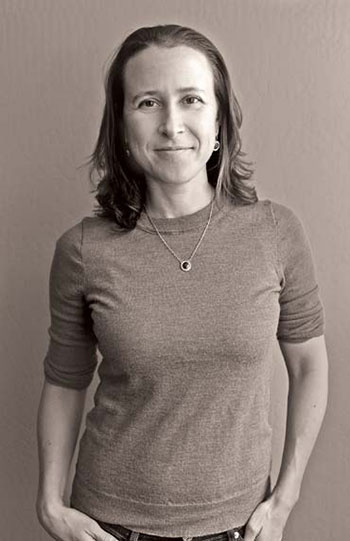
Anne Wojcicki is co-founder and CEO of 23andMe, a personal genetics firm based in Mountain View whose technology provides the science behind the PBS program “Finding Your Roots with Henry Louis Gates, Jr.” Below, DNA samples are processed at NGI, a lab the firm contracts with in the area.
Photo courtesy of 23andMe
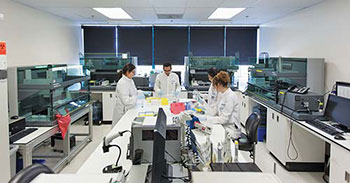 Photo by Mark Tuschman courtesy of CIRM
Photo by Mark Tuschman courtesy of CIRM
Kilroy expects to complete the LinkedIn complex in the second half of 2014, adding to a Bay Area development pipeline that now includes four projects under construction aggregating approximately 1.5 million sq. ft. (139,350 sq. m.). The four projects represent a total estimated investment of approximately $800 million and are all pre-leased to leading technology companies, including salesforce.com, Synopsys and Audience.
Institutions such as University of California-San Francisco continue to pour on the growth in terms of both facilities and industry partnerships, such as the school’s efforts with Pfizer.
The California Institute for Quantitative Biosciences (QB3) in March 2012 renewed and expanded a three-year agreement with Pfizer Inc. to collaborate on research projects at the University of California with the potential to transform world-class science into better medicine.
The renewal expands a 2009 QB3-Pfizer collaboration that led to 22 joint projects across the three QB3 campuses — UC Berkeley, UCSF and UC Santa Cruz — addressing a wide range of bioscience research. The expanded partnership will be open to UC Davis researchers, as well. The renewal also includes the opportunity for Pfizer to provide seed funding for startup bioscience companies currently in the QB3 Garage network and to sponsor research that could foster spin-off companies in the future.
“This collaboration has been very productive for Pfizer, and a diversity of scientists from our numerous research centers have enjoyed the scientific interactions we have had with the QB3 network,” said Uwe Schoenbeck, chief scientific officer of Pfizer External R&D Innovation.
Launch Pad for Discovery
The 2012 Jones Lang LaSalle Life Sciences Cluster Report released earlier this year identified and ranked a total of 21 U.S. cities according to weighted scores for total employment in high-tech research and hospital/medical fields; life science establishments; National Institutes of Health (NIH) funding; and venture capital funding. Three of the Top 10 clusters were in California, with San Diego shooting up five spots from last year’s report to No. 2, ahead of San Francisco Bay Area (No. 3) and Los Angeles/Orange County (No. 8).
Three days prior to that report’s release, the California Biomedical Industry Report published by BayBio, California Healthcare Institute (CHI) and PwC US found that nine of the 39 medicines approved by the U.S. Food and Drug Administration (FDA) in 2012 were developed by California companies. The 2013 report found California to be:
- No. 1 in jobs: Biomedical industry employment in California has grown at an average annual rate of 0.5 percent over the past five years, with 269,997 people employed in the total biomedical industry;
- No. 1 in new treatments to patients: Twenty-one percent of the nation’s biomedical R&D pipeline is coming from California labs;
- No. 1 in venture capital investments: California biomedical companies secured $1.98 billion in venture capital investment through the first three quarters of 2012.
- No. 1 in federal funding: $3.33 billion in funding from the NIH went to California institutions, more than any other state and 15.1 percent of total national NIH funding.
The Jones Lang LaSalle report said San Diego rose from seventh to second in its cluster analysis in large part due to “a staggering $13.8 billion in M&A activity in the last 12 months, including AstraZeneca’s acquisition of Ardea Biosciences, Hologic’s purchase of Gen-Probe and Bristol-Myers Squibb’s offer to acquire Amlyin Pharmaceuticals. While this type of consolidation could potentially leave empty space on the market, middle-market companies have driven a steadily increasing demand for space in life sciences-oriented facilities, keeping space occupied and rents stable.”
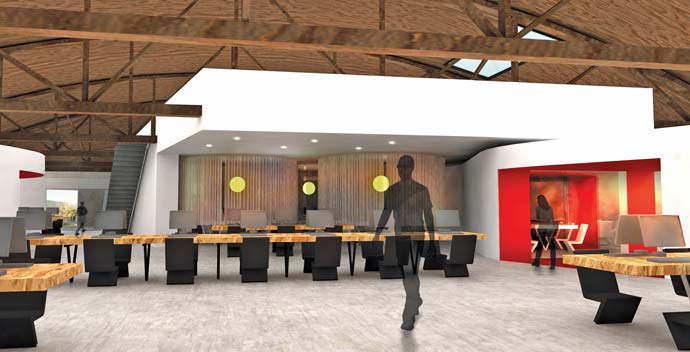
Steelhouse, a marketing technology and advertising firm, in January pre-leased one of three industrial facilities at the Hayden Tract in Los Angeles being converted to creative offices at the WorkScapes campus under development by Hackman Capital Partners, LLC. Steelhouse will bring 75 employees to the site.
Stability in the Golden State comes in large measure from partnership.
“Biomedical innovation is being fueled by a new paradigm to advance R&D through a combination of diverse, alternative sources of funding, non-traditional partnerships and greater collaboration among the biotech, pharmaceutical, the investment community and regulatory bodies,” said Tracy Lefteroff, global managing partner, venture capital practice and national life sciences partner, PwC US, in the California report.
Institutional ballast for such collaboration comes from the state’s renowned public university system. It also comes from a unique program: California’s stem cell agency, the California Institute for Regenerative Medicine (CIRM). CIRM was established in November 2004 with the passage of Proposition 71, the California Stem Cell Research and Cures Act. The statewide ballot measure provided $3 billion in funding for stem cell research at California universities and research institutions. CIRM’s first $1.1 billion in grants (through July 2010) created 25,000 job years and $200 million in new tax revenue through 2014, according to an independent economic impact study released in January 2011.
Since the passage of Proposition 71 CIRM has awarded more than $270 million under the Major Facilities Grant Program and used it to attract almost $900 million more in private and philanthropic donations, to help build 12 major research facilities around California.
A Healthy ‘Lunatic Fringe’
Walshok recently completed her own study comparing the industry cluster ecosystems of San Diego, Philadelphia and St. Louis. What she found was a continuum “with San Diego at the lunatic fringe,” she jokes, meaning a high failure rate. “But we start so many companies that some of them succeed.”
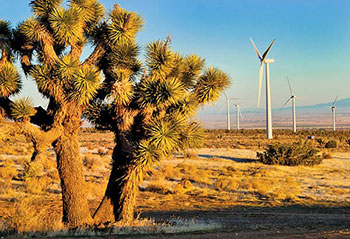
Iberdrola Renewables just added the Manzana Wind Power Project in Kern County, Calif., to a portfolio of clean energy projects that now spans 19 states. The project will support the local economy with property tax payments estimated to be more than $50 million and lease payments expected to be more than $30 million over the life of the project.
Photo courtesy of Iberdrola
Over the past five years, she says, San Diego saw a high of 21 new technology start-ups per 100,000 in population, compared to 14 in Philadelphia and just under nine in St. Louis. Patents in San Diego numbered 180 per 100,000 residents, compared to 65 in Philadelphia. And venture capital hovered between $1 billion and $2 billion in San Diego during her study period, while it never breached $500 million in Philadelphia.
In releasing its annual global venture capital confidence survey last July, Mark Heesen, president of the National Venture Capital Association, echoed Walshok’s description of California entrepreneurs: “Venture capitalists are nimble and can quickly move to where the most promising entrepreneurs, policies and innovations exist.”
By all indications, they still exist in California. MoneyTree data from 2012 show a total of 3,698 venture capital deals involving more than $26.5 billion invested. California represented 1,521 of those deals (41 percent) and more than $14 billion of those dollars (53 percent). That’s serious sustenance for a thriving entrepreneurial ecosystem.
Walshok says other areas of the country often see entrepreneurs springing from the ranks of large-firm executives in transition. In San Diego, they’re serial self-starters, and they rise from a pool of shared knowledge across disciplines and a cultural leaning toward coaching and mentorship — two attributes not often found in those large companies.
“We build great start-ups,” she says. “Mergers and acquisitions are fine, and sales are fine, because the guys who sell their companies stay here and start the next company. So we get that churn.”
Walshok says the model for business development has changed drastically since the days of the vertically integrated company. “They were like nation-states,” she says. Globalization and rapid technological change have conspired to promote what she calls a new division of labor, with small, nimble, innovative enterprises accumulating around specific technology areas
.
“Then you have these robust global companies which used to do the R&D themselves now looking to be closer to these hubs,” she says. And while state policies have indirectly helped foster that environment, the industrial parks and incubators that form that culture’s infrastructure are nearly all privately funded. If anything, she says, these companies worry that economic developers in California, pleading for new streams of revenue in the wake of the abolition of redevelopment agencies, will cause taxes to rise on the very engines driving growth in their communities.
“What trumps public money?” she asks. “It turns out to be access to talent. What makes talent gather? In San Diego’s case, it was two things — land use decisions that go back to the 1920s and 1950s, and the growth in federal funding for basic research. In my community, there’s more concern about NIH, NSF and DOD funding than redevelopment money.”
Life sciences growth is now reaching into nearby Carlsbad, where the city just approved a proposal by Bio, Tech and Beyond to create an incubator in a former Farmers Insurance building, and where companies such as Life Technologies, Isis Pharmaceuticals and Genoptix operate. But Walshok says companies still pay a premium to be close to talent. San Diego is Exhibit A: a city that’s spread out over 800 sq. miles (2,072 sq. km.), “and yet 90 percent of the high-tech companies are within five miles of UCSD and Torrey Pines,” she says. “If they would locate 20 miles inland, the cost would be half. They don’t.”
Zones a Big Help
It could be said the California entrepreneurial spirit even infuses the projects and programs of larger, less nimble organizations also bent on changing the world, whether multinational corporation, developer or even that most intransigent of organizations, government itself. Witness Samsung‘s recent investments in multiple California locations, as well as Amazon‘s three new distribution centers in Patterson, San Bernardino and, in January, Tracy in San Joaquin County, following the company’s 2011 sales tax collection agreement with the state.
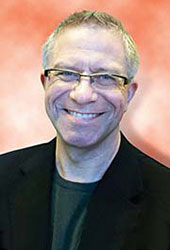
“d.light is located in San Francisco because it grew from a Stanford Business School start up. This area is a hotbed of social enterprises and technology innovation which makes it very attractive, along with the quality of talent that is here. However, the high cost and high tax environment are not attractive and were the advantages not here, we would be located somewhere else.”
— Donn Tice, Chairman & CEO d.light design.
Amazon’s investment in Southern California is in the San Bernardino Valley Enterprise Zone, part of a state program that is alive and well and which one observer describes as “the only places in the state attracting large employers and jobs.”
Recent reports show that the vacancy rate for industrial space in the Inland Empire region closed the year at 4.9 percent. In the third quarter of 2012 alone, the County of San Bernardino attracted 64 businesses, adding 651 new jobs to the region along with the retention of an estimated 1,982 jobs. Some of the business attraction highlights for the quarter include Updike Distribution Logistics in Ontario and M. Block & Sons in Redlands. The county saw 68 lease renewals in the quarter as well, including from Distribution Alternatives and Weber Logistics in Fontana, Newell Rubbermaid in Victorville and The Dial Corp. in Victorville. In February, Prologis worked a build-to-suit deal with BMW that will see a new facility rise in Redlands while Prologis takes on BMW’s former facility in Ontario.
In Los Angeles, a recently expanded SEZ was crucial to ICON‘s decision to invest in a new 40,000-sq.-ft. (3,716-sq.-m.) headquarters and manufacturing facility in Chatsworth. According to Mayor Antonio Villaraigosa’s office, the City of Los Angeles remains in the top four U.S. cities for manufacturing jobs in part because of incentives like the SEZ.
“Earlier this year when our company realized it was time to expand, we took a very careful look at where to relocate,” said ICON Lead Designer and CEO Jonathan Ward last June. “We evaluated everything, and after review, decided to stay in the San Fernando Valley where ICON was conceived 16 years ago. The Mayor’s role in the expansion of the SEZ to Chatsworth definitely fostered an environment where we could continue to grow the brand here in L.A.”
Last May, a new SEZ was created in the city’s Harbor Gateway area. Covering portions of San Pedro, Harbor City, Wilmington, and Harbor Gateway. In 2011, 5,401 businesses participated in the city’s two SEZs, retaining over 20,000 jobs and creating over 5,000 new jobs because of their participation. Companies that cite the SEZs as a major motivator have included Costco, Baxter International, LuckyBrand Jeans and electric vehicle manufacturer Boulder Electric Vehicle.
A Closer Look Up North
Back in the Silicon Valley, Samsung Information Systems America Inc. (SISA), a Samsung Electronics U.S. R&D Center, in September announced its plans for expansion and relocation to a new 8.5-acre (3.4-hectare) campus in Mountain View.
“Our new R&D Center will provide an outstanding environment to support our plans for strategic growth and attracting the very best employees,” said Jay Chang, president of SISA. “Our company will benefit from the dynamic location, the culture and the diversity of talent here in the region.”
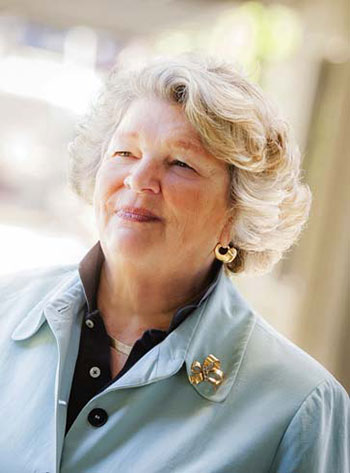
Mary Walshok, Ph.D., associate vice chancellor for public programs and dean of extension at University of California San Diego, says companies in her region continue to pay a premium to be close to talent.
Construction is anticipated to start in the second half of 2013 on the company’s two new six-story class-A office buildings totaling approximately 385,000 sq. ft. (35,767 sq. m.) and two parking structures, with occupancy expected in 2014. The project is aiming for LEED-Gold certification, and builds on Samsung’s more than 20-year history in the Bay Area.
In August, Samsung Semiconductor Inc. announced the expansion of its 300,000-sq.-ft. (27,870-sq.-m.) San Jose campus. According to EE Times, city tax incentives for the San Jose expansion include $500,000 for capital equipment, a hiring tax credit worth about $37,440, a reduction in traffic impact fee from $12.75 per square foot to $5 per square foot, a reduction in construction taxes from 4.5 percent to 1 percent of valuation and a rebate of up to 50 percent on the 5 percent utility tax paid annually for 10 years. Samsung will also receive an R&D tax credit from California and a discounted rate from Pacific Gas and Electric.
Samsung has also finalized a new office lease in San Francisco.
Amazon’s project in Tracy is being developed by Prologis on land the logistics developer acquired in its merger with Catellus in 2005. Ben Peterson, first vice president and market officer for Prologis in the Central Valley region, says the first successful deal on the property was with Crate & Barrel in 2007-’08. One thing that attracted Amazon.com was that it was ready to go, entitled, with the right zoning and nearly all infrastructure in place.
“All that was left over was to fill the building,” he says. “In our world, timing is a big part of the equation.”
Scott Lamson, president, Northwest Region, Prologis Americas, says the Amazon.com project in Tracy was two years in the making, and benefited greatly from partnering with both the City of Tracy and the San Joaquin Partnership.
“This latest development in Tracy not only represents good jobs coming to the region but California’s strong partnership with Amazon,” said Kish Rajan, Director of the Governor’s Office of Business and Economic Development. “This third new distribution center marks a commitment by Amazon of over 1,000 California jobs in the last year alone.”
Peterson says there’s been a tremendous amount of growth in the corridor defined by the line from Sacramento to Stockton to Fresno, and that the area comprising Tracy and Stockton is the sweet spot for industrial users targeting Northern California. One factor limiting choice is finding properties that have already gone through the “really lengthy process” of environmental review required by the state. With that as a criterion, “the list dwindles really fast,” he says. “It’s difficult to place a facility now, because a lot of companies don’t leave themselves enough time. California is tough.”
Then again, so is the whole West Coast when it comes to regulations, he says. But he’s seen California cities and counties in the past few years step up their games to be business friendly.
“They may be stuck with regulations handed down by the state, but they’re trying to improve processes and make it more streamlined,” he says. “It’s a nice change of pace. When the growth went away, that allowed for cities to stop and look at their own organizational structures for permitting. They took advantage of downtime and are doing really well right now.”
Peterson says the state gets a bad rap in general, though he admits to some surprise at how few companies left during the recession. “In my portfolio, I can’t think of a single company that got up and left and went to another state.”
The same holds for people.
“You hear people say they’re moving to Oregon, Idaho or Nevada,” he says. “That’s absolutely not what’s happening. There’s no better place to get a job.”
A Future for Manufacturing
The National Governors Association in January 2013 issued a report called ” ‘Making’ Our Future” that focuses on eight states’ policy approaches to support manufacturing. The state was highlighted because it and the other seven states renewed their focus on advanced manufacturing because of a recently concluded National Governors Association Center for Best Practices Policy Academy designed to help them do so.
In California’s case, legislation was passed to renew and extend the community college initiative that funds manufacturing and other regional industry workforce partnerships. According to the U.S. Bureau of Economic Analysis, California in 2011 accounted for 12.5 percent of total U.S. manufacturing GDP. Moreover, manufacturing’s share of state GDP has been on a steady climb since 2004. The average annual manufacturing wage in 2012 in California was $76,649.
Last July, California Steel Industries in Fontana announced a $100-million investment in a new pipe mill. The project is expected to add 100 production and logistics jobs to the company’s payroll of 1,000. A federal report indicates that manufacturing accounts for less than 9 percent of the state’s non-agricultural payrolls. But there is one area of the state where manufacturers account for more than 10 percent: the San Francisco Bay Area.
